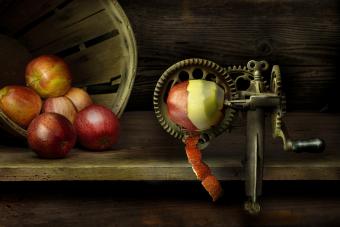
Every comedy with a 'clumsy' lead is obligated to include a harrowing vase-knocking scene that still makes audiences gasp. Japanese satsuma vases are exactly the kind of antique you don't want to bump into. Worth thousands of dollars, these highly collectible earthenware vases are just as striking today as they were 200 years ago. Learn all about this fascinating period in Japanese pottery history and why the vases turn heads at auctions every year.
What Are Satsuma Vases?
If you don't frequent the ceramics aisle in expensive antique stores, then you probably don't know much about Japanese satsuma vases. Around 1600, Japan co-opted Korean kilning techniques and created a type of earthenware pottery called Ko-Satsuma. These original Satsuma pieces are incredibly valuable and rare, so unless you've got a four-leaf clover on you, you probably won't stumble across one of these.
Yet, there are authentic satsuma vases all over the internet. These are known as Kyo-satsuma, a style that developed in the 19th century. Of these vases, the most common today are the ones made during Japan's Meiji period (1868-1902). At the time, Japan was beginning to engage in a lot of trade with the Western world, so there are tons of extant imported vases around today.
What Do Satsuma Vases Look Like?
Satsuma vases are distinctive for a few characteristics. While they don't have a specific shape, there are a few things you can look for to see if a vase is an original satsuma.

- They're heavy. Because they're earthenware instead of porcelain, they've got a lot more heft to them than the delicate vases from other regions.
- Their foreground paintings are painted on top of the background glaze. Sometimes you can feel the slightly raised edges from the foreground paint, but you should also be able to tell from the shiny background glaze contrasting with the matte foreground that the paints weren't applied at the same time.
- They feature distinct Japanese iconography. You might not have trained eyes, but if you've ever looked at Japanese woodblocks or tapestries, you should have an idea of what sort of images usually feature in a Japanese work.
- The images aren't completely crowding the background. Satsuma vase artists allowed the background to a be a feature of their pieces instead of needing it to be completely covered.
- The paint is fluid and delicate. The colorful images should have a watercolor-like look.
The Issue With Satsuma Vase Maker's Marks
For a lot of western ceramics, people rely on maker's marks, signatures, or serial numbers to help identify an authentic piece. The most valuable satsuma vases don't usually have any marks because of two reasons: a) there wasn't a single manufacturer or artist, and b) artists signing their vases didn't start until around 1870.

However, a good hallmark to tell that a satsuma was made in Japan is the Shimazu clan mark, a group that ruled over the satsuma region. This mark is a red circle with a cross inside. In addition, you can find artist signatures on Meiji pieces and later, though not all satsumas are signed.
If you ever find anything written in English on the bottom of a satsuma vase, you're looking at something made post-WWII, and potentially inauthentic.
How Valuable Are Satsuma Vases?
Depending on how old they are, satsuma vases can be worth $100-$50,000. Usually, the satsuma vases people come across are more in the $500-$3,000 range. Naturally, the most valuable pieces are either really old, exquisitely designed, from a rare artist, or in a collection of average pieces.
Additionally, these vases' prices fluctuate a lot because the buyer interest waxes and wanes. If you catch it at the right time, your piece can sell for significantly more than you expected. For example, Christie's estimated that this satsuma bowl with a cherry blossom boat scene from the Meiji period was worth $3,000-$4,000. Yet, the bowl sold in 2021 for a whopping $56,250.
However, a more sparsely illustrated vase signed by Yabu Meizan from the same period recently sold for $4,309 on eBay. And this pair of moon vases, also from the Meiji period, only sold for $725.56. It goes to show that if you have an authentic satsuma vase, it's worth having it appraised as it might be one of these rare big money pieces.
How to Take Care of a Satsuma Vase
Unlike your favorite HomeGoods flower vase, satsuma vases aren't meant to be used. They're like the knick-knacks in your grandparents' mythical tchotchke cabinet. But like any great (expensive) display piece, you'll always be fighting to keep it well dusted. Be careful to avoid using any cleaners on your vase, and the most severe thing you should use is a damp cloth to swipe away any dirt.
Make Fine Art Feel Current With a Satsuma Vase
These antique pieces of Japanese artwork detail a historic cultural tradition and a uniquely regional art style. Not to mention they're really pretty to look at. Gifting and buying these statement display pieces isn't fashionable, but you can bring the trend back by peppering your abode with one or two of these beautiful antique vases.







